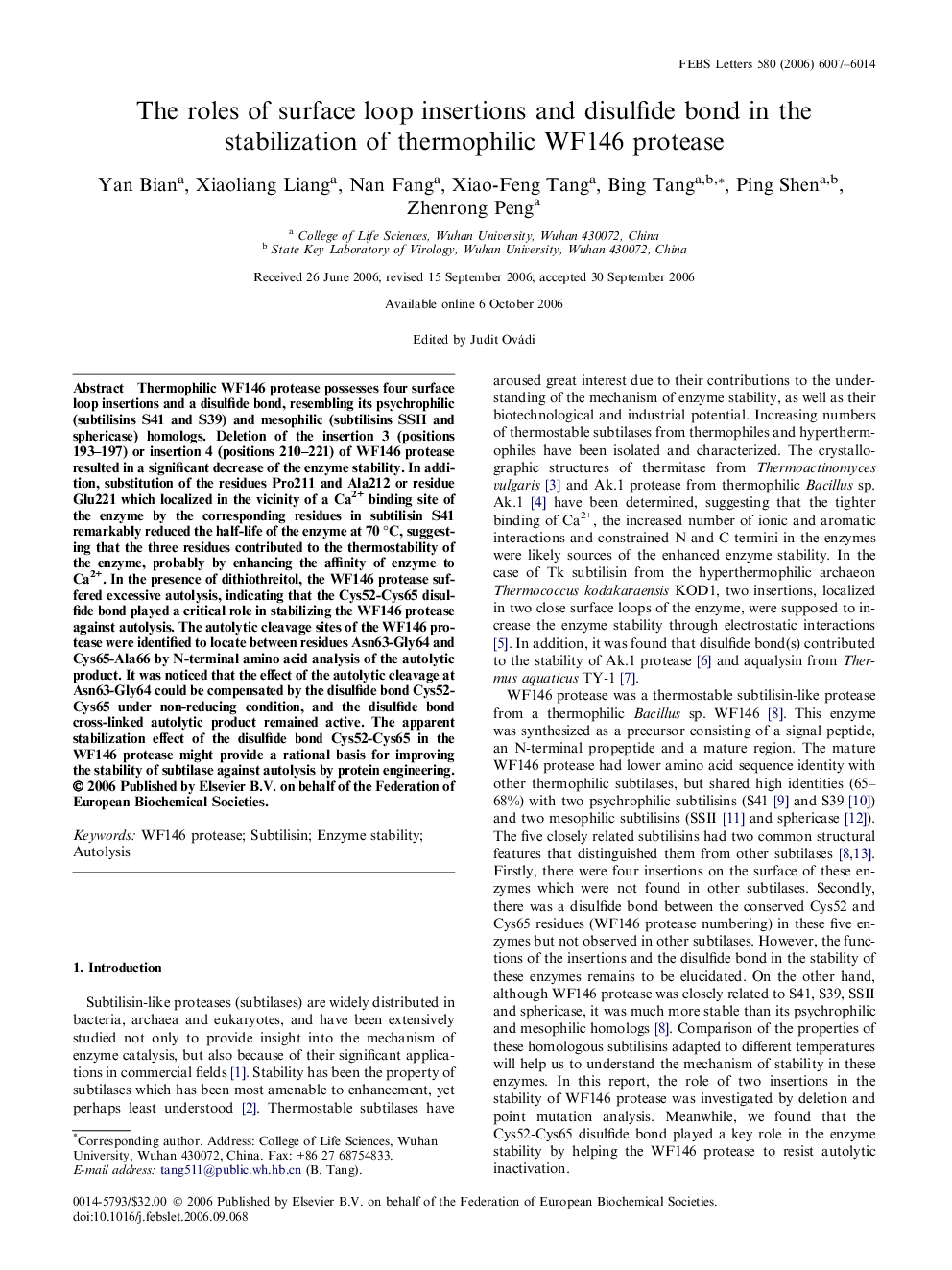| Article ID | Journal | Published Year | Pages | File Type |
|---|---|---|---|---|
| 2050318 | FEBS Letters | 2006 | 8 Pages |
Thermophilic WF146 protease possesses four surface loop insertions and a disulfide bond, resembling its psychrophilic (subtilisins S41 and S39) and mesophilic (subtilisins SSII and sphericase) homologs. Deletion of the insertion 3 (positions 193–197) or insertion 4 (positions 210–221) of WF146 protease resulted in a significant decrease of the enzyme stability. In addition, substitution of the residues Pro211 and Ala212 or residue Glu221 which localized in the vicinity of a Ca2+ binding site of the enzyme by the corresponding residues in subtilisin S41 remarkably reduced the half-life of the enzyme at 70 °C, suggesting that the three residues contributed to the thermostability of the enzyme, probably by enhancing the affinity of enzyme to Ca2+. In the presence of dithiothreitol, the WF146 protease suffered excessive autolysis, indicating that the Cys52-Cys65 disulfide bond played a critical role in stabilizing the WF146 protease against autolysis. The autolytic cleavage sites of the WF146 protease were identified to locate between residues Asn63-Gly64 and Cys65-Ala66 by N-terminal amino acid analysis of the autolytic product. It was noticed that the effect of the autolytic cleavage at Asn63-Gly64 could be compensated by the disulfide bond Cys52-Cys65 under non-reducing condition, and the disulfide bond cross-linked autolytic product remained active. The apparent stabilization effect of the disulfide bond Cys52-Cys65 in the WF146 protease might provide a rational basis for improving the stability of subtilase against autolysis by protein engineering.
